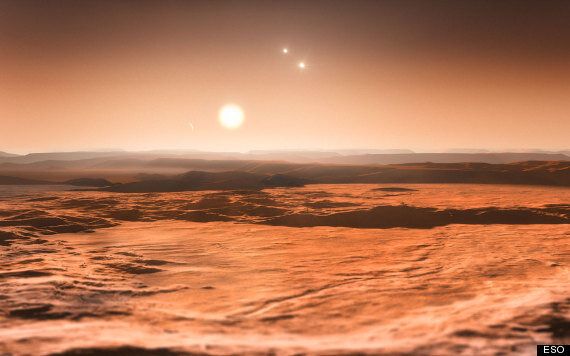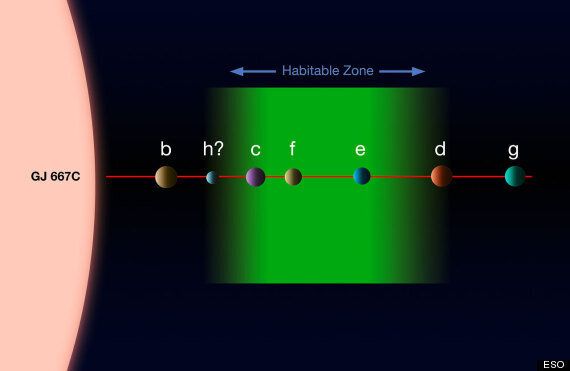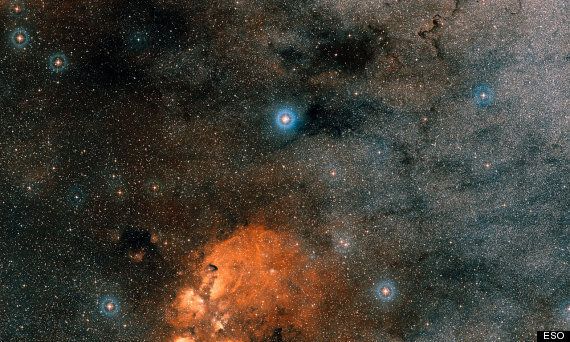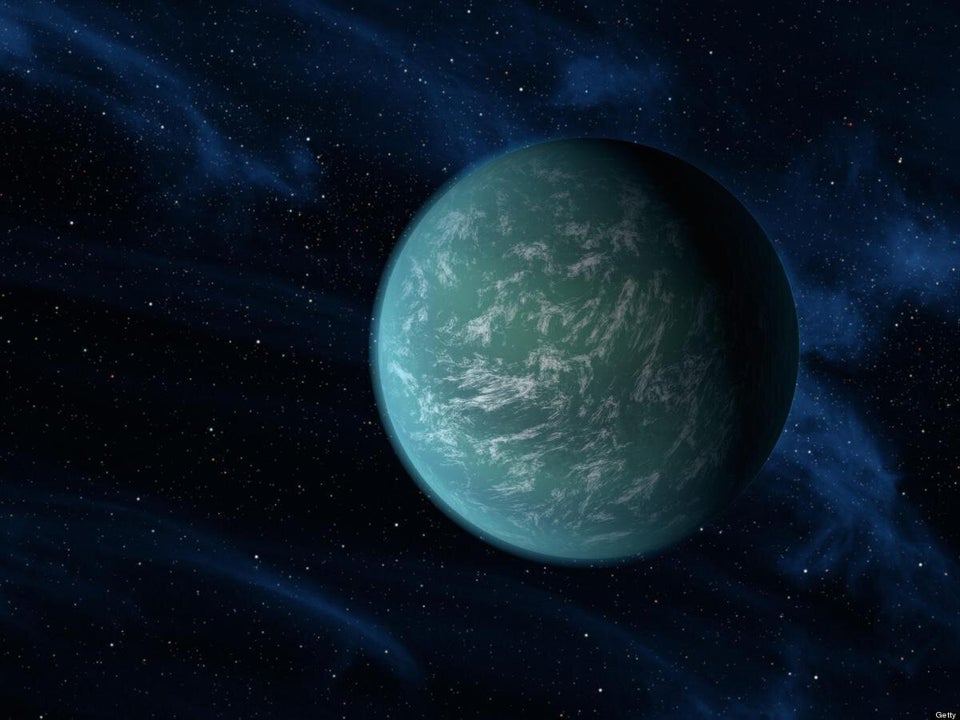Three potentially habitable 'Super Earth' worlds have been found orbiting a triple-star system just 22 light years from Earth.
Gliese 667C is relatively near to our own sun, in the constellation of Scorpius, and has at least six planets in orbit around it.
Three of those worlds are in the so-called habitable zone, where the temperature might make it possible for liquid water - and thus, potentially, life - to form.

Above: artist's impression of a sunset on Gliese 667C F
These 'Super Earths' are thought to be planets more massive than our own world, but less massive that Uranus or Neptune.
These strange worlds are part of a system where two other stars would also light up the sky, giving each of the three worlds a unique 'triple' sunset.
Those two other stars, while more distant, would give off as much light as the full Moon does to Earth.
Using a 3.6-metre European Southern Observatory telescope in Chile, the team of scientists led by Guillem Anglada-Escudé of the University of Göttingen, Germany and Mikko Tuomi of the University of Hertfordshire, UK, have been able to take a closer look at the system.
By using this data combined with other observations, they now think the system is the best example yet found of an alien star that might have fostered life.

The data is still relatively incomplete, however, since the planets cannot be directly seen by telescopes. It is possible that conditions on these worlds might make the formation of liquid water impossible, depending on the condition of their atmospheres or other variables.
But even if life is not present on these planets, the finding still points to the presence of many more habitable worlds in our galaxy than previously thought.
Nasa, ESA and many other agencies and academics are searching for potentially habitable exo-planets. But while so far about 100 of the 898 alien worlds found so far are thought to be in the 'habitable zone', most are too big to have a surface with liquid water.

Above: the sky around the Gliese 667 system
But the three habitable planets around Gliese 667C are the first small-enough worlds to be found orbiting this close to a low-powered star.
The ESO explained:
Compact systems around Sun-like stars have been found to be abundant in the Milky Way. Around such stars, planets orbiting close to the parent star are very hot and are unlikely to be habitable. But this is not true for cooler and dimmer stars such as Gliese 667C.
In this case the habitable zone lies entirely within an orbit the size of Mercury's, much closer in than for our Sun. The Gliese 667C system is the first example of a system where such a low-mass star is seen to host several potentially rocky planets in the habitable zone.
"The number of potentially habitable planets in our galaxy is much greater if we can expect to find several of them around each low-mass star -- instead of looking at ten stars to look for a single potentially habitable planet, we now know we can look at just one star and find several of them," added co-author Rory Barnes from the University of Washington.
